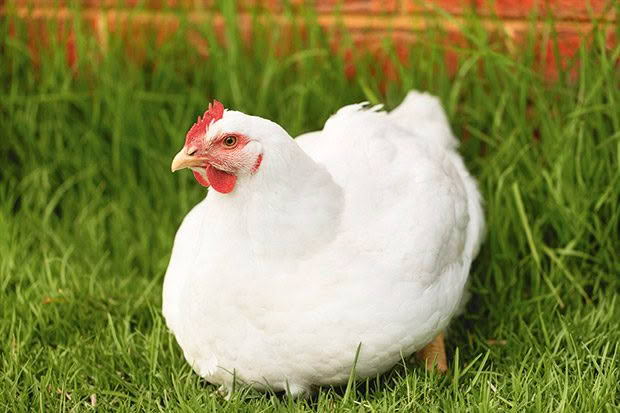Can I eat that? What to avoid when processing a chicken

A handy guide for when you find something gross.
Most of the time when you’re processing a chicken, all you’ll see is flesh, bone, and organs. But occasionally you might find something gross. Here are guidelines for what to look for, and what not to eat.
Abnormal carcass colour – localised (bluish-reddish-brown)
Details: Haemorrhages, bruising.
Action: Trim off affected area.
Can you eat it? Only eat unaffected parts of the carcass.
Abnormal carcass colour – extensive (bluish-reddish-brown)
Details: Haemorrhages, bruising.
Action: None.
Can you eat it? No.
Abnormal carcass colour – localised (greenish-yellow)
Details: Faecal and/or bile staining.
Action: Trim off affected area.
Can you eat it? Only eat unaffected parts of the carcass.
Abnormal carcass colour – extensive (greenish-yellow)
Details: Faecal and/or bile staining.
Action: None.
Can you eat it? No.
Abnormal carcass colour – extensive (yellow-orange)
Details: Liver problem
Action: None.
Can you eat it? No.
Abnormal carcass colour (red)
Details: Improper bleeding, toxaemia, septicaemia.
Action: None.
Can you eat it? No.
Abscess – localised
Details: No systemic involvement.
Action: Trim off affected area.
Can you eat it? Only eat unaffected parts of the carcass.
Abscess – extensive
Details: Systemic involvement, multiple.
Action: None.
Can you eat it? No.
Arthritis
Details: Pus in joint.
Action:
Can you eat it? Only eat unaffected parts of the carcass/
Ascites
Details: Fluid in abdominal cavity.
Action: None.
Can you eat it? No.
Breast blisters
Details: Watery, fluid-filled, fibrotic.
Action: Trim off affected area.
Can you eat it? Only eat unaffected parts of the carcass.
Discoloured liver/abnormal liver (carcass colour normal)
Details: Cirrhosis of liver
Action:
Can you eat it? Only eat unaffected parts of the carcass.
Emaciation
Details: Wasted thigh and breast meat.
Action:
Can you eat it? No.
Fibrinous deposits
Details: Jelly-like film on heart and/or liver
Action:
Can you eat it? Only eat unaffected parts of the carcass.
Lesions – extensive
Details: Septicaemia.
Action:
Can you eat it? No.
Parasites
Details: Roundworms in gastrointestinal tract
Action:
Can you eat it? Only eat unaffected parts of the carcass.
Peritonitis
Details: Pus in abdominal cavity
Action:
Can you eat it? No.
Tumours/nodules – localised
Details:
Action: Trim off affected area
Can you eat it? Only eat unaffected parts of the carcass.
Tumours/nodules – multiple
Details:
Action:
Can you eat it? No.
Wound – localised injury
Details:
Action: Trim off affected area
Can you eat it? Only eat unaffected parts of the carcass.
Wound – systemic
Details: signs of haemorrhaging in organs, flesh, swollen organs, muscle wastage
Action:
Can you eat it? No
Love this story? Subscribe now!
 This article first appeared in NZ Lifestyle Block Magazine.
This article first appeared in NZ Lifestyle Block Magazine.
